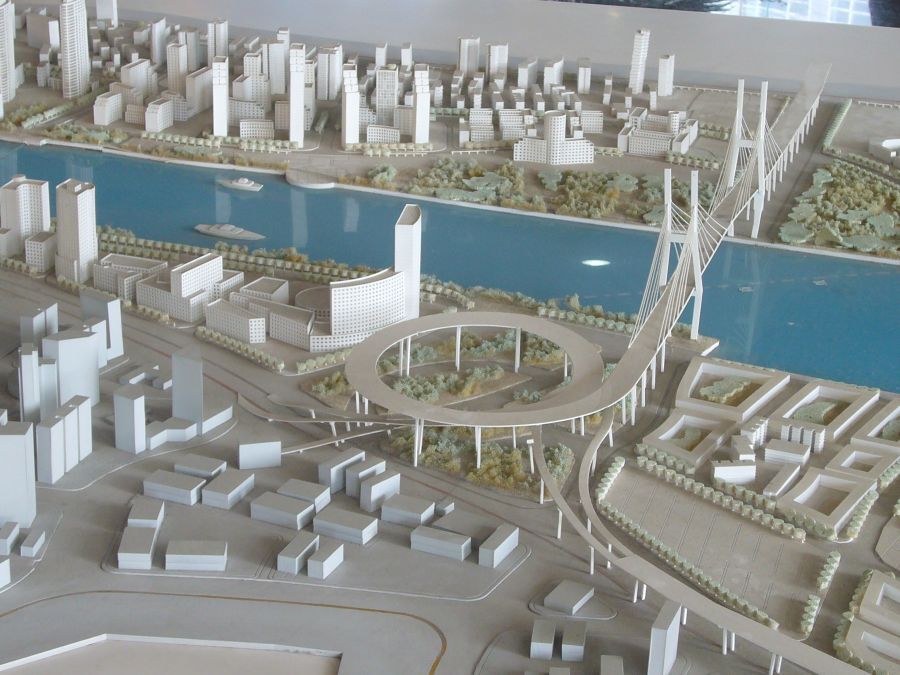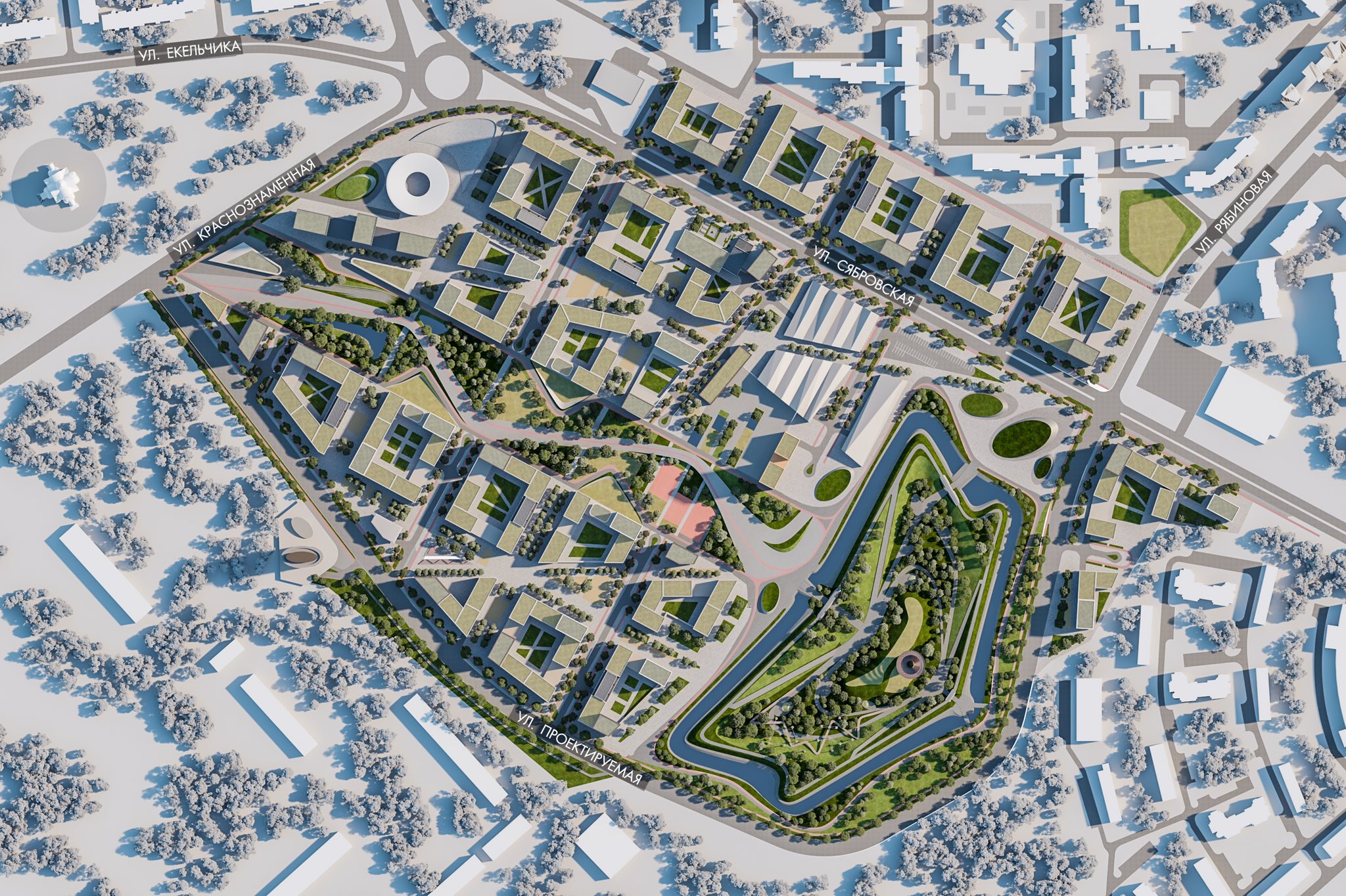
Urban designers are responsible for shaping public spaces and the overall layout of cities and towns. Their work encompasses the planning and design of urban areas, including streets, parks, plazas, and public transportation systems, with the aim of enhancing the quality of life for residents and fostering sustainable and vibrant communities.
The role of an urban designer involves a broad range of responsibilities:
- Designing Public Spaces: Creating functional, aesthetic, and accessible public spaces that meet the needs of diverse populations.
- Urban Planning: Developing plans that address land use, transportation, infrastructure, and environmental impact.
- Community Engagement: Collaborating with stakeholders, including residents, businesses, and policymakers, to ensure that designs reflect community needs and desires.
- Sustainability: Incorporating green practices and sustainable design principles to promote environmental stewardship and resilience.
Urban designers use a variety of software applications to visualise, analyse, and communicate their ideas effectively. Mastering these tools enables them to produce high-quality work, collaborate with other professionals, and adapt to the evolving demands of modern urban environments. Software proficiency not only enhances the technical aspects of design but also facilitates innovative solutions and improves overall project outcomes.
This guide lists the top urban design and planning software to learn, covering the best tools for drafting, 3D modelling, GIS, BIM, rendering, simulation, and project management. Perfect for urban designers, planners, architects, and students looking to master must-learn software, upgrade workflows, and stay competitive with industry-ready best practices.
Why Should You Learn Urban Design Software?

Learning urban design software is essential for those who want to work on real city projects, collaborate with AEC teams, and present ideas that are clear, data-driven, and visually strong. These tools connect analysis, design, and communication in one workflow.
Learning urban design software is essential for several key reasons:
- Enhanced Precision and Detail: Urban design software allows for the creation of highly accurate and detailed plans and models, ensuring that designs are both feasible and efficient.
- Improved Visualisation: These tools enable designers to create 3D models and simulations, offering a clear and immersive view of proposed projects, which aids in better understanding and presentation of ideas.
- Efficient Collaboration: Software facilitates better coordination among various stakeholders, including architects, engineers, and planners, ensuring that all aspects of a project are seamlessly integrated.
- Data-Driven Decision Making: Tools like GIS and BIM provide valuable data and analytics, helping designers make informed decisions based on real-world conditions and trends.
- Sustainability and Innovation: Advanced software supports the implementation of sustainable practices and the exploration of innovative solutions, crucial for developing resilient and livable urban environments.
- Competitive Advantage: Proficiency in the latest design software keeps urban designers at the forefront of the industry, enhancing their skills and making them more competitive in the job market.
Also Read: The Ultimate Career Guide to Urban Designer: Roles & Salaries
Top Urban Design Software You Should Learn

In the current scenario, mastering urban design software propels you forward in implementing innovative designs and gives you a competitive edge. These software solutions streamline the urban design process, support collaboration, and ensure greater accuracy in project execution. Given their importance, urban designers should upskill themselves with various urban design software and strive to master at least a few. Let's take a look at the best urban design software that every urban designer should consider learning:
Design and Drafting Software
Design and drafting tools like AutoCAD, SketchUp, and Rhino help urban designers move from line drawings to detailed 2D and 3D models, speeding up concept development, documentation, and coordination with architects, engineers, and city authorities on real projects
1. Autodesk AutoCAD (Paid)
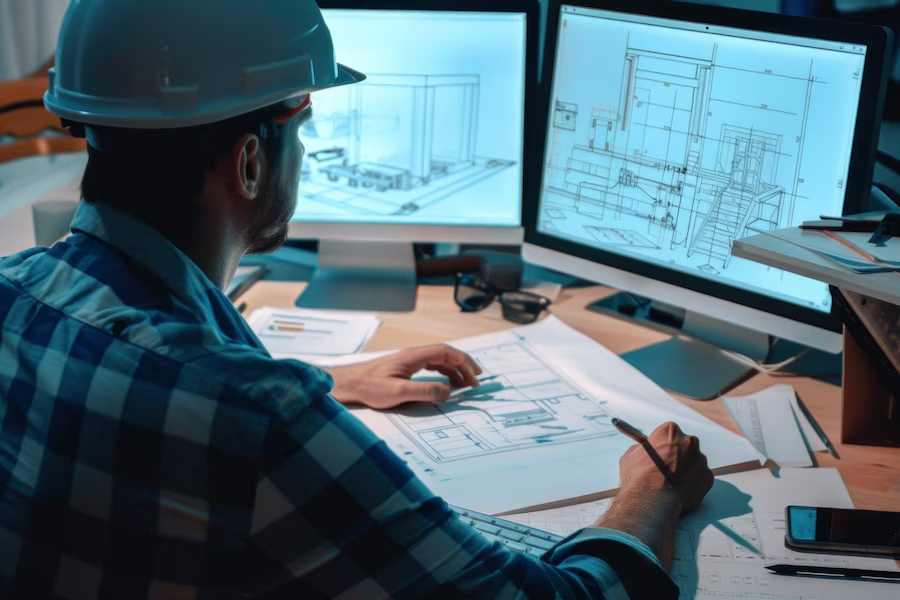
Autodesk AutoCAD is a leading computer-aided design (CAD) software in the AEC industry, renowned for its capabilities in creating precise 2D and 3D architectural and urban design drawings. It enhances the drafting, designing, and editing processes for urban design plans, architectural drawings, and other layouts, delivering exceptional accuracy. AutoCAD empowers urban designers by streamlining project workflows, boosting productivity through the automation of repetitive tasks, and fostering effortless collaboration with its easy-to-share design data. Its vast array of tools and customisable features make AutoCAD highly adaptable to diverse project needs, significantly enhancing the design and documentation process.
Why Should Urban Designers Learn Autodesk AutoCAD?
Urban designers should consider learning Autodesk AutoCAD because it enhances their ability to create precise and detailed urban designs, improves productivity, streamlines workflow, and enables better communication with contractors and clients. Expertise in this software can lead to increased career opportunities in high-end companies.
Key Features:
- Precision Drafting
- Automated Documentation
- Extensive Library
- Effective Team Collaboration
- Visualisation Capabilities
- Compatibility With Other Software
2. SketchUp Pro (Paid)
SketchUp Pro is a widely used 3D architectural and urban design software known for its intuitive interface and powerful 3D modelling capabilities. It enables urban designers to comfortably create and visualise urban design projects, ranging from initial concepts to detailed plans, using its extensive library of models and materials. Ideal for both professionals and beginners, SketchUp supports a quick and efficient design process. Its compatibility with various plugins and software further enhances its functionality, enabling advanced rendering, animation, and analysis. This versatility makes SketchUp an essential tool in the design workflow, fostering collaboration and innovation.
Why Should Urban Designers Learn SketchUp Pro?
By mastering SketchUp Pro, urban designers can enhance their skill set, improve their project outcomes, and demonstrate their value to potential employers, thereby increasing their chances of landing better job opportunities.
Key Features:
- Intuitive 3D Modelling
- Extensive Library
- Quick and Efficient Visualisation
- Plugin Compatibility
- Collaboration Tools
3. Rhino (Paid)

Rhino, also known as Rhinoceros 3D, is a highly versatile 3D modelling software widely used by architects and urban designers for its precision in handling complex geometries. Renowned for its effectiveness in conceptual design and visualisation, Rhino offers robust tools for NURBS modelling, making it ideal for creating smooth, free-form surfaces. Its functionality is significantly enhanced by plugins like Grasshopper, which enable parametric design capabilities, allowing for efficient iterations and exploration of design options. Additionally, Rhino’s compatibility with various design and engineering software makes it an invaluable asset in collaborative, multi-disciplinary design processes.
Why Should Urban Designers Learn Rhino 3D?
Urban designers should learn how to use Rhino 3D because of its flexibility in creating complex geometries and high precision. It is particularly valuable for urban designers working on projects with unconventional forms or those requiring detailed 3D representations. Rhino's ability to handle a wide range of input and output formats makes it an excellent tool for bridging the gap between different software in the design process.
Key Features:
- Precise NURBS Modelling
- Unlimited Modelling Space
- 2D Drafting and Layout Tools
- Extensive Import/Export Capabilities
- Rendering Plugins (e.g., V-Ray, Flamingo)
- Surface and Solid Modelling
- 3D Printing Preparation Tools
- Customisable Interface and Scripting
- Large Plugin Ecosystem
Geographic Information Systems (GIS)
4. ArcGIS (Paid)

ArcGIS is a comprehensive geographic information system (GIS) software platform developed by Esri (Environmental Systems Research Institute). It allows users to work with maps and geographic information and create, manage, analyse, and visualise spatial data. In the context of architecture and urban design, ArcGIS is invaluable for site analysis, urban studies, and large-scale planning projects.
Why Should Urban Designers Learn ArcGIS?
Urban designers should consider learning ArcGIS because it provides powerful tools for understanding and analysing the context of large-scale projects. It enables designers to make data-driven decisions by incorporating various spatial datasets into their design process. ArcGIS is particularly valuable for urban designers and landscape architects working on large-scale projects, as it allows for the integration of demographic, environmental, and infrastructure data. Proficiency in ArcGIS can lead to opportunities in urban design firms, government agencies, and architectural practices specialising in data-driven design approaches.
Key Features:
- Spatial Analysis Tools
- 2D and 3D Mapping
- Geodatabase Management
- Remote Sensing Integration
- Network Analysis
- Terrain Analysis and 3D Visualisation
- Demographic and Statistical Analysis
- Cartographic Design Tools
- Web GIS Capabilities
- Integration with CAD and BIM Software
Also Read: How is BIM Used in Urban Planning ?
5. QGIS (Free)

QGIS (Quantum Geographic Information System) is a free and open-source geographic information system software that allows users to create, edit, visualise, analyse, and publish geospatial information. QGIS is known for its user-friendly interface, extensive plugin ecosystem, and compatibility with various data formats. It provides functionality similar to proprietary GIS software but with the added benefits of being cost-free and community-driven. Its ability to handle diverse data formats and integrate with other geospatial libraries enables data-driven, context-sensitive urban design solutions. The open-source nature of QGIS facilitates collaboration and allows for extensive customisation through Python scripting.
Why Should Urban Designers Learn QGIS?
Urban designers should master QGIS because it is a free, open-source alternative to expensive GIS software. It provides access to powerful spatial analysis tools without budget constraints, making it ideal for urban designers and small firms. Moreover, the active QGIS community ensures the software remains updated with emerging urban design needs. Expertise in QGIS enhances overall geospatial literacy, with skills transferable to other GIS platforms, making it a valuable asset for urban designers in today's data-centric design landscape.
Key Features:
- Comprehensive Vector and Raster Data Handling
- Advanced Spatial Analysis Tools
- Cartographic Production Tools
- Geoprocessing Tools
- Digitising Tools
- Python Console for Customisation
- Extensive Plugin Repository
- Print Composer for Map Creation
- Integration with PostGIS and SpatiaLite
- Support for Various Coordinate Reference Systems
Building Information Modelling (BIM)
BIM tools like Revit and Navisworks help urban designers coordinate buildings, infrastructure, and public spaces in 3D, improving documentation, clash detection, and performance analysis across complex mixed-use or transit-oriented developments.
6. Revit (Paid)

Autodesk Revit is a versatile design software that offers multiple design possibilities for urban designers through its visualisation and management capabilities. It provides a centralised platform to create highly accurate urban design projects, significantly improving the design and construction processes. Its advanced 3D modelling and rendering tools enhance visualisation, while its collaborative features allow multiple users to work on the same model simultaneously. Additionally, Revit’s automated documentation and detailing capabilities save time and improve accuracy, and its integration with analysis tools optimises building performance.
Why Should Urban Designers Learn Autodesk Revit?
Urban designers should consider learning Revit because it improves efficiency and project outcomes, and opens up numerous career opportunities by enabling enhanced collaboration and delivering high-quality designs.
Key Features:
- Design Flexibility
- Realistic Rendering
- Efficient Documentation
- Software Interoperability
- Effective Team Collaboration
- Energy Analysis and Simulation
7. Navisworks (Paid)

Autodesk Navisworks is a renowned design software primarily used for reviewing architectural and urban design models. It enables users to open, combine, animate, and render models of different file types, making it simpler to address and resolve conflicts during the design process through its clash detection feature. Navisworks supports various file types, making it highly compatible with handling different design and model files. Additionally, it allows users to create 4D simulations by incorporating time-based data into 3D BIM models, providing a visual representation of construction schedules and workflows.
Why Should Urban Designers Learn Navisworks?
Urban designers should learn how to use Navisworks because it enhances project oversight, minimises errors, and improves decision-making throughout the design and construction process. Proficiency in Navisworks can open up career opportunities in construction management, BIM coordination, and project planning roles across the AEC industry.
Key Features:
- Advanced Clash Detection
- 4D/5D Simulation
- Model Aggregation
- Photorealistic Visualisation
- Quantification Tools
- Collaboration and Review Tools
Also Read: 10 Award-Winning Architecture Thesis Projects From Around The World
Visualisation and Rendering Software
Visualization tools such as Lumion, V-Ray, and Adobe Creative Suite turn technical models into compelling visuals, helping urban designers communicate streetscapes, open spaces, and city form to clients, communities, and decision-makers with clarity and emotion.
8. Lumion (Paid)

Lumion is a visualisation software designed specifically for architecture and urban designers to create stunning visualisations of projects. It specialises in converting 3D models into realistic renderings and animations quickly and easily. Lumion’s user-friendly interface and real-time rendering capabilities allow users to visualise designs in detail without extensive technical expertise. It supports various 3D modelling software, including Autodesk Revit, SketchUp, Rhino, and others, enabling seamless integration into existing design workflows. Lumion is distinguished by its ability to bring urban design projects to life with stunning detail, enhancing the creative process and presentation of designs.
Why Should Urban Designers Learn Lumion?
Urban designers should master Lumion because it enhances their ability to communicate ideas to clients and stakeholders. Its speed and ease of use allow for faster creation of high-quality visuals, making client presentations and design competitions more effective. Mastery of Lumion can lead to career opportunities in urban design firms that value strong design and visual communication skills.
Key Features:
- Real-time Rendering
- Extensive Content Library
- Lighting Effects
- Animation Capabilities
- LiveSync with CAD/BIM Software
- 360° Panoramas and VR Output
9. V-ray (Paid)

V-ray is a powerful rendering engine and plugin widely used in the architecture and urban design industry. Developed by Chaos Group, it is known for producing photorealistic images and animations with high levels of detail and accuracy. Its advanced lighting and material systems enable designers to accurately represent complex designs and materials. V-ray integrates seamlessly with various 3D modelling software, including 3ds Max, SketchUp, Rhino, and Revit, making it a versatile tool for architectural and urban designers.
Why Should Urban Designers Learn V-ray?
Urban designers should learn how to use V-ray because it offers unparalleled control over the rendering process, allowing for the creation of highly realistic and visually stunning images. Proficiency in V-ray can significantly enhance an urban designer's portfolio, potentially leading to better job opportunities and client projects. It is particularly valuable for firms specialising in high-end visualisations or those working on complex, detail-oriented projects.
Key Features:
- Advanced Global Illumination
- Adaptive Dome Light
- V-ray Materials Library
- GPU Rendering Capabilities
- Distributed Rendering
- VR and 360° Rendering Support
- Denoising Technology
10. Adobe Creative Suite (Photoshop, Illustrator, InDesign) (Paid)
Adobe Creative Suite is a collection of graphic design, video editing, and web development applications for architects and urban designers. The most relevant components are typically Photoshop, Illustrator, and InDesign. These three powerful tools work seamlessly together to cover a wide range of design needs, from image editing to vector graphics to layout design. The integration between these tools enables a smooth workflow from concept to final presentation.
Why Should Urban Designers Learn Adobe Creative Suite?
Urban designers should consider learning Adobe Creative Suite because it provides a comprehensive toolkit for visual communication and presentation. Proficiency in these applications allows urban designers to enhance renderings, create professional graphics, and produce high-quality presentation materials. Skills in Adobe Creative Suite are often expected in many firms and can significantly enhance a designer's ability to communicate ideas effectively to clients and stakeholders.
Key Features:
- Photoshop: Raster graphics editing, photo manipulation, and digital painting
- Illustrator: Vector graphics creation, logo design, and precise drawings
- InDesign: Page layout and typesetting for multi-page documents
- Creative Cloud Libraries for asset sharing across applications
- Integration with other Adobe services and applications
- Regular updates and new feature releases
- Cross-platform compatibility (Windows and macOS)
- Extensive plugin ecosystem
- Cloud storage and collaboration features
- Mobile companion apps for on-the-go work
Also Read: Top 10 Plugins and Add-Ins for Navisworks
Project Management and Collaboration Tools
Project management tools like Trello, Asana, and Microsoft Project help urban designers track tasks, deadlines, stakeholders, and phases, making complex planning and design projects more organized, transparent, and deliverable.
11. Trello (Free and Paid Plans)

Trello is a web-based list-making application and collaborative tool for project management and task organisation. It organises projects into boards, each containing lists and cards. This visual layout helps teams track progress, assign tasks, and manage workflows efficiently.
Why Should Urban Designers Learn Trello?
Urban designers should learn how to use Trello because it offers a simple yet powerful way to manage complex projects and workflows. In architecture, where projects often involve multiple stakeholders and phases, Trello can help:
- Organise design phases and track progress visually
- Collaborate effectively with team members and clients
- Manage task assignments and deadlines
- Keep all project-related information in one accessible place
- Adapt to different project management methodologies
- Integrate with other tools commonly used in architectural practice
Key Features:
- Drag-and-drop functionality for easy task management
- Customisable workflows
- File attachments and comments on cards
- Checklists and due dates
- Team collaboration tools
- Power-Ups for added functionality (e.g., calendar view, time tracking)
- Mobile apps for iOS and Android
- Integration with other productivity tools
- Automation capabilities for repetitive tasks
12. Asana (Free and Paid Plans)
Asana is a web and mobile application designed to help teams organise, track, and manage their work. It can be a powerful tool for urban designers, helping them manage complex urban planning projects, collaborate with multidisciplinary teams, and keep track of various stakeholder inputs. Its flexible structure allows for the organisation of diverse urban design processes and workflows. Its flexibility in document organisation and task assignment makes it ideal for coordinating large-scale urban development plans involving multiple parties.
Why Should Urban Designers Learn Asana?
Urban designers should learn how to use Asana because it offers a comprehensive solution for managing the complex, multifaceted nature of urban design projects. It allows for easy tracking of design processes and iterations and helps manage public engagement efforts, crucial deadlines, and resource allocation across team members.
Key Features:
- Task creation and assignment
- Project templates for quick setup
- Customisable project views (list, board, timeline, calendar)
- Team workload management
- File sharing and attachment capabilities
- Comment threads for task-specific discussions
- Time tracking and reporting tools
- Customisable dashboards for project overviews
- Integration with various third-party apps and services
13. Microsoft Project (Paid)

Microsoft Project is a project management software designed to assist project managers in developing plans, assigning resources to tasks, tracking progress, managing budgets, and analysing workloads. While not specifically designed for urban designers, it offers robust features that can be adapted to complex urban planning projects. Its advanced reporting capabilities facilitate effective communication with stakeholders and city officials. Additionally, its integration with other Microsoft tools ensures a seamless workflow within a familiar software ecosystem.
Why Should Urban Designers Learn Microsoft Project?
Urban designers should learn Microsoft Project because it offers a comprehensive toolkit for managing complex, large-scale urban development projects. The features of Microsoft Project are particularly valuable for urban designers dealing with intricate, multi-faceted projects that require precise scheduling, resource management, and comprehensive oversight.
Key Features:
- Visual project scheduling
- Resource levelling and capacity planning
- Critical path analysis
- Cost tracking and budgeting tools
- Multiple project management
- Customisable reports and dashboards
- Timeline views for high-level project overviews
- Task dependencies and constraints
- Integration with Microsoft 365 suite
- Collaboration tools for team communication
Also Read: Top 10 Software for BIM Consultants
Analysis and Simulation Software
Analysis tools such as Autodesk InfraWorks and CityEngine support large-scale 3D city modeling, traffic and environmental studies, and scenario planning, helping urban designers test zoning rules, density, and infrastructure decisions before implementation.
14. Autodesk Infraworks (Paid)

Autodesk Infraworks is a 3D modelling and visualisation software designed for infrastructure planning and design, making it particularly useful for urban designers and planners. Infraworks allows users to create large-scale models of urban environments, integrating various data sources like GIS and satellite images to provide a comprehensive view of existing conditions and proposed designs. It helps create conceptual models, conduct feasibility studies, and visualise their impact on the environment. You can leverage this software to aggregate data, generate information-rich models, evaluate various design concepts, and analyse traffic flow at intersections to visualise their impact.
Why Should Urban Designers Learn Autodesk Infraworks?
Urban designers should consider learning Infraworks because it offers a powerful platform for conceptual design and analysis in urban contexts. It enhances communication with stakeholders through immersive 3D visualisations, making complex urban proposals more accessible and understandable. By mastering Infraworks, urban designers can improve their ability to create, analyse, and present comprehensive urban design plans efficiently, making it a valuable tool in their professional toolkit.
Key Features:
- GIS data integration
- Parametric modelling for quick design iterations
- Environmental analysis tools (e.g., solar studies, flood simulations)
- Traffic simulation and analysis
- Terrain modelling and editing
- Cloud-based collaboration
- Virtual and augmented reality support
- Compatibility with various data formats
- Scripting and API for customisation
15. CityEngine (Paid)

CityEngine is a 3D modelling software specifically suitable for urban planning and architecture. It uses procedural modelling techniques to generate large-scale 3D urban environments quickly and efficiently. CityEngine is particularly powerful for creating detailed city models, urban scenarios, and master plans. The software excels in testing and visualising zoning regulations and urban policies, making it invaluable for policy implementation. Its high-quality visualisation improves communication with stakeholders and streamlines workflows.
Why Should Urban Designers Learn CityEngine?
Urban designers should learn how to use CityEngine because it offers powerful and unique capabilities for urban design and analysis. Its integration with GIS data facilitates context-aware design, while its analysis tools provide valuable insights into urban metrics such as FAR and density. By learning CityEngine, urban designers can significantly improve their ability to create, analyse, and present complex urban designs and scenarios, making it a vital tool for comprehensive and efficient urban planning.
Key Features:
- Procedural modelling
- Rule-based design for consistent urban typologies
- GIS data integration and analysis
- Scenario planning and comparison tools
- 3D zoning and land use planning
- Detailed facade and street furniture generation
- Export capabilities for various 3D formats and game engines
- Python scripting for advanced customisation
- Web scene publishing for online sharing
- VR and AR support
Final Thoughts
Learning urban design software is no longer optional for planners and designers who want to work on complex, real-world projects. These tools help you combine analysis, design, and communication so that ideas become clear, buildable, and easier to approve.
Building a strong software stack, from GIS and BIM to visualization and project management, also makes your portfolio more competitive for roles in global firms, government agencies, and research labs focused on cities and infrastructure.
If you want structured, industry-aligned training, the BIM Course for Architects offered by Novatr is a strong starting point to master BIM and related tools. Visit our resource page to keep learning about urban design careers, workflows, and tools.
FAQs
1. What software is used for urban planning?
Urban planning teams typically use a mix of GIS software (ArcGIS, QGIS), CAD and BIM tools (AutoCAD, Revit, Civil 3D), 3D modeling tools (SketchUp, Rhino), and visualization software (Lumion, V-Ray, Adobe Suite) for analysis, design, and presentation.
2. What are the 10 software used in urban planning?
Common tools include ArcGIS, QGIS, AutoCAD, Revit, Civil 3D, SketchUp, Rhino, InfraWorks, CityEngine, and Adobe Creative Suite. Together, they cover mapping, design, BIM coordination, large-scale modeling, and graphic communication for urban planning projects.
3. Do urban designers use Revit?
Yes, many urban designers use Revit to model building blocks, podiums, and streetscape interfaces as part of mixed-use or transit-oriented projects. Revit’s BIM workflows improve coordination with architects and engineers and support accurate drawings and schedules.
4. What are the 7 C's of urban design?
The “7 C’s” often refer to context, character, choice, connections, creativity, custodianship, and collaboration. They guide how public spaces, buildings, and streets should relate to each other to create safe, legible, and people-friendly urban environments.
5. What are the 5 D's of urban planning?
The “5 D’s” typically include density, diversity, design, destination accessibility, and distance to transit. These factors help planners evaluate how supportive an urban area is for walking, transit use, and mixed-use, human-scaled development.
Was this content helpful to you



.jpg)




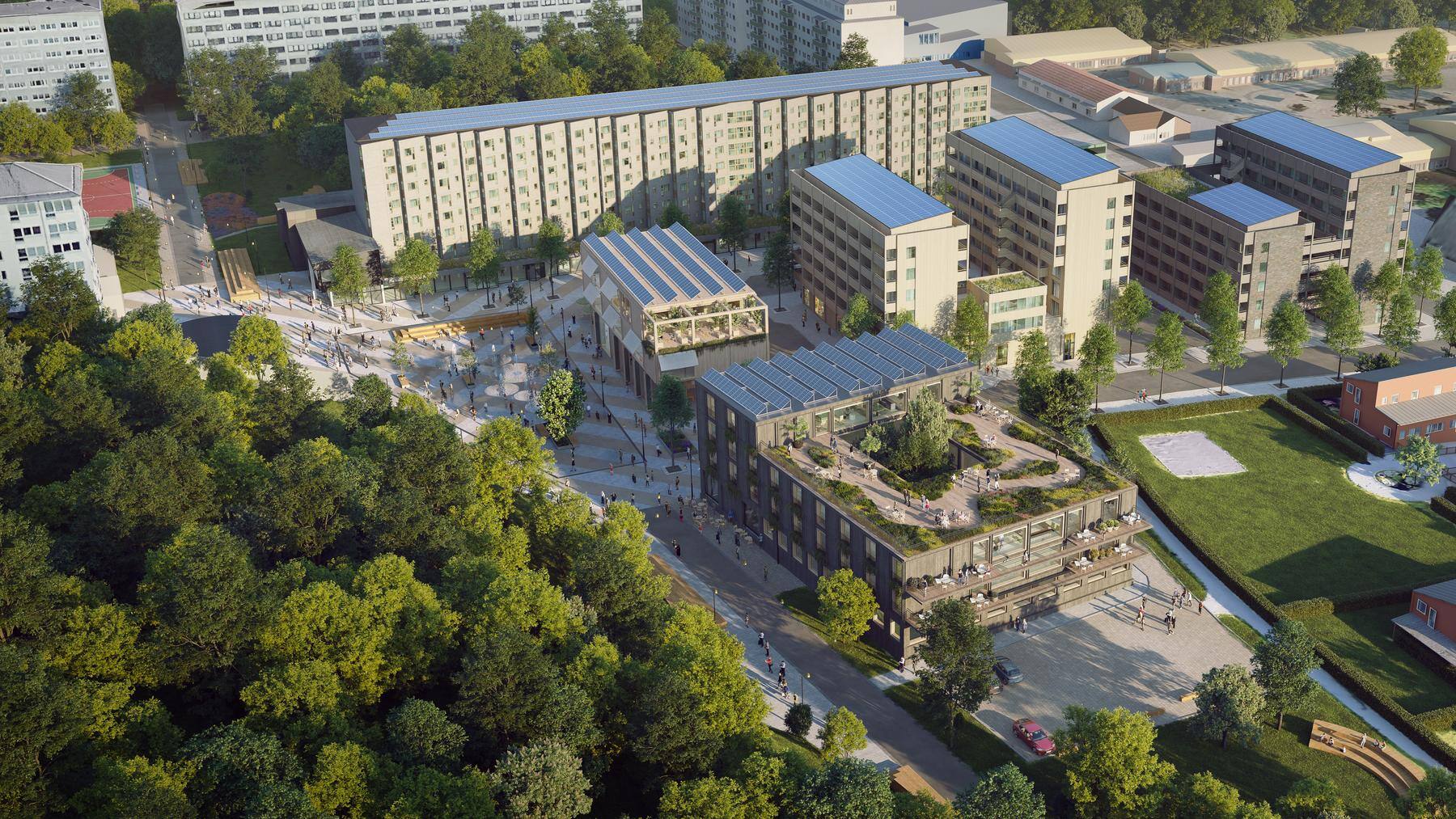
.png)
